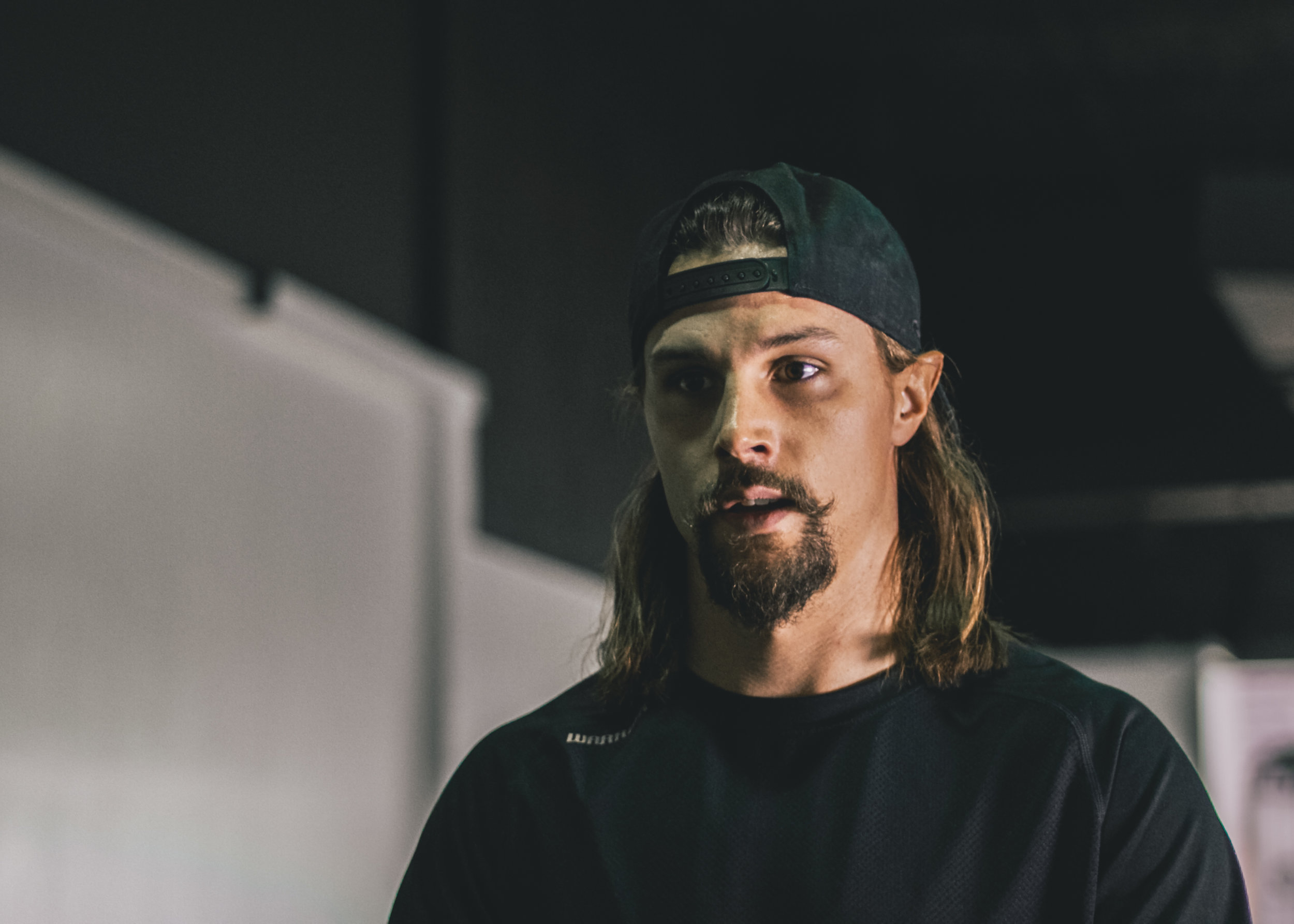A Rare Look Into The Off-Season Training of Erik Karlsson
Hockey players can’t get away with being one-dimensional. Every position on the ice demands total-body strength, explosiveness, and endurance.
The typical off-season for an NHL player lasts just 12 weeks. If you take in account much needed vacations, wedding to attend and other off-ice commitments, their off-season is even shorter. Offseason training for any NHL player needs to get the job done and get it done quickly.
If there’s one style of training that fits this, it would be strongman training. With just a few exercises athletes can train for hockey specific anaerobic conditioning, overall functional strength, power, and target key areas that may be susceptible to injuries.
Elite players like San Jose Sharks defensemen Erik Karlsson utilize strongman training to maximize results in minimal time. “It’s one hour of pure hell. The first time I went through it, I nearly threw up. And it took me nearly half an hour to recover afterwards,” says Karlsson. “But I improved quickly. By the end of the summer I was finishing workouts that would crush anyone else. I’ve never been in such good condition going into camp.”
The 10-year NHL veteran and two time Norris trophy winner for the NHL’s best defensemen routinely plays more than 25 minutes a night, consistently ranking him in the top 5 of minutes played per game. It goes without saying, building power, explosiveness and the ability to repeat those qualities would be key to keeping Karlsson successful. “Because the nature of hockey, traditional aerobic conditioning is useless,” says David Labentowicz, Karlsson’s trainer. “Strongman training done in the fashion that we perform here, trains the anaerobic energy system - the predominant system used in hockey. We need our hockey athletes to be strong and explosive - then to be able to repeat that explosiveness over and over at a high level. Traditional aerobic training simply isn’t done at a high enough intensity to offer any benefit. When I explained to Erik that we’d get him in exceptional condition without doing any cardio, he was all ears.”
The following is a snapshot of what a strongman based workout would look like for Karlsson. Once again, strongman training was primarily used to build anaerobic and lactic acid conditioning. Karlsson also had additional weight training exercises designed to address his individual deficiencies and areas of priority.
Labentowicz typically prescribes just four exercises for an intense strongman workout. But volume and intensity are high, and they finish in less than an hour. '“If you’re in the gym for more than an hour, you’re making friends, not training. Both growth hormone and testosterone drop significantly once training longer than 60 minutes, so our workouts never exceed this length,” Labentowicz says. “Karlsson’s time is incredibly valuable. He needs to train incredibly hard, but also incredibly smart.”
“This is the way I wanted to take my career. Training like this has definitely given me the edge I’m looking for,” says Karlsson.
THE WORKOUT
A) Sideway Sled Drag x 30 meters:
Perhaps the most hockey specific strongman exercise, sideways sled drags are an excellent way to develop lateral speed while training conditioning. Karlsson drags a sled weighing loaded with 270 pounds, for a distance of 30 meters. 5 sets total and after each set, he rests 60 seconds.
B) Backwards Face Pull with Sled x 30 meters:
Next up, Karlsson continues with sled work. Loaded with an additional 225 pounds, this exercise targets hip extension and conditions the muscles of the upper back and rotator cuff, two areas critical to hockey performance.
C) Prowler/Sled Push x 30 meters:
Karlsson continues working at a feverish pace and pushes a Prowler loaded with 250 pounds. The lactic acid continues to build. At this point, any normal human being would be keeled over a toilet. He completes 5 sets once again, with 60 seconds rest between each set.
D) Tire Fight:
As a finisher, Karlsson enlisted the help of former NHL All Star Daniel Alfredsson. A 500 pound tire is placed between the athletes. The only instruction given is to find a way to push the tire on your opponent’s side. “Fights” like this last typically 30-60 seconds, and with an all out effort require a 3 minute rest between sets. Karlsson and Alfredsson complete 3 sets total.
At Elite x Edge, our vision is simple: to provide our trainees with the training and tools that were once only available to and utilized by the elite of the sports and fitness world. Doing so, those who work with us achieve exceptional results in a fast and sustainable manner. Your time and energy are the most valuable assets you have. Investing in quality training that delivers results is the smartest way to grow those assets and prevent them from becoming liabilities.

